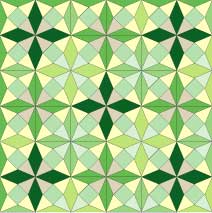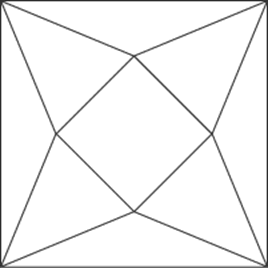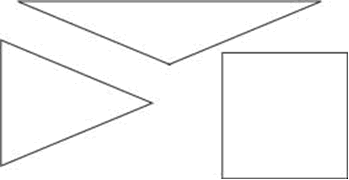Skip over navigation
I have decided to make another patchwork quilt. The end result should look something like this:

It is a design known as "World without end" and is based on a series of squares like this:




Or search by topic
Number and algebra
Geometry and measure
Probability and statistics
Working mathematically
Advanced mathematics
For younger learners
A Patchwork Piece
Age 7 to 11
Challenge Level 





I have decided to make another patchwork quilt. The end result should look something like this:

It is a design known as "World without end" and is based on a series of squares like this:

The problem is to make the individual pattern pieces the right size (and shape!).

Although it is not exactly obvious this design is based on a regular octagon in a square. These diagrams show the transformations required:

This helps in making the individual pattern pieces. Can you work out how each of the above steps was achieved? Try it with a square piece of paper.
How could you make the pattern if you only have a ruler and a pair of scissors?
What about if you were allowed to use a pair of compasses as well?
Let us know how you achieved each step. You can send in pictures of your final piece, too.
_________________________
Here are the first four squares of the actual quilt:


